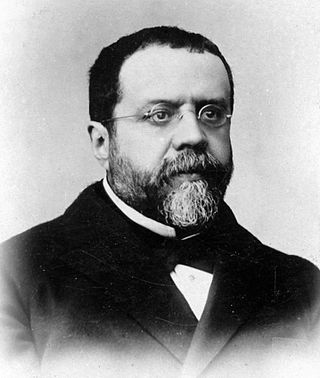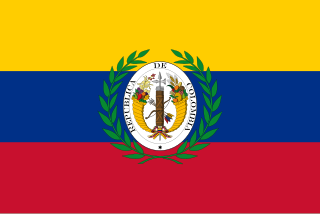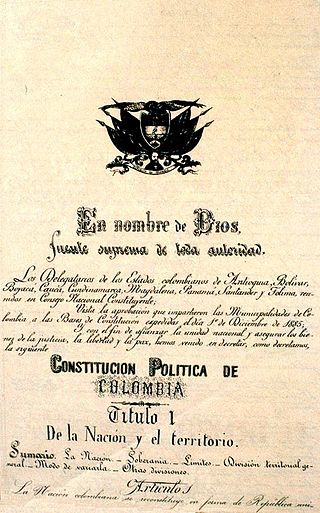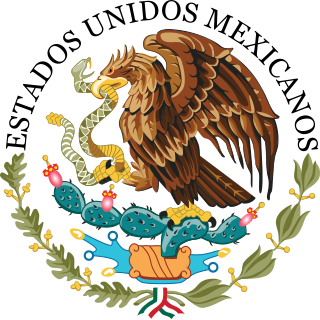A governor is an administrative leader and head of a polity or political region, in some cases, such as governors-general, as the head of a state's official representative. Depending on the type of political region or polity, a governor may be either appointed or elected, and the governor's powers can vary significantly, depending on the public laws in place locally. The adjective pertaining to a governor is gubernatorial, from the Latin root gubernare. In a federated state, the governor may serve as head of state and head of government for their regional polity, while still operating under the laws of the federation, which has its own head of state for the entire federation.

The federal government of the United States is the common government of the United States, a federal republic located primarily in North America, comprising 50 states, five major self-governing territories, several island possessions, and the federal district of Washington, D.C., where the majority of the federal government is based.

Rafael Wenceslao Núñez Moledo was a Colombian author, lawyer, journalist and politician, who was elected president of Colombia in 1880 and in 1884. Núñez was the leader of the so-called "Regeneration" process which produced the Colombian Constitution of 1886 which was to remain until 1991.

The Political Constitution of Colombia of 1991, is the Constitution of the Republic of Colombia. It was promulgated in Constitutional Gazette number 114 on Sunday, July 7, 1991, and is also known as the Constitution of Human Rights. It replaced the Political Constitution of 1886 and was issued during the presidency of the liberal César Gaviria, with ideas from the also liberal Luis Carlos Galán.

The United States of Colombia was the name adopted in 1863 by the Constitución de Rionegro for the Granadine Confederation, after years of civil war. Colombia became a federal state itself composed of nine "sovereign states.” It comprised the present-day nations of Colombia and Panama and parts of northwestern Brazil. After several more years of intermittent civil wars, it was replaced by the more centralist Republic of Colombia in 1886, predecessor to modern Colombia.

Horacio Serpa Uribe was a Colombian lawyer, politician and senator. Serpa ran as the Colombian Liberal Party candidate for president on three occasions; in 1998, 2002, and 2006. He previously served as congressman for Santander as senator, Inspector General of Colombia, president of the National Constituent Assembly, Minister of the Interior, and as ambassador to the Organization of American States. He was also involved in the 8000 process scandal in which money from the Cali Cartel entered the presidential campaign of Liberal candidate Ernesto Samper. In 2007 Serpa ran for the governorship of Santander Department and was elected on 28 October in the regional elections.

The Congress of Cúcuta was a constituent assembly where the Republic of Colombia was created. The Congress elected Simón Bolívar and Francisco de Paula Santander president and vice-president, respectively.

The Granadine Confederation was a short-lived federal republic established in 1858 as a result of a constitutional change replacing the Republic of New Granada. It consisted of the present-day nations of Colombia and Panama and parts of northwestern Brazil. In turn, the Granadine Confederation was replaced by the United States of Colombia after another constitutional change in 1863.

Miguel Antonio Caro Tobar was a Colombian scholar, poet, journalist, philosopher, orator, philologist, lawyer, and politician.

The vice president of Colombia is the second-highest officer in the executive branch of the national government, after the president of Colombia, and ranks first in the presidential line of succession. The vice president is indirectly elected together with the president to a four-year term of office by the people of Colombia through the Popular Vote. Since the passage of the Article 102 Amendment to the Colombian Constitution, the vice president may also be appointed by the president to fill a vacancy, upon leave of absence or death, resignation, or removal of the president. Since the 1990s, the vice president has been afforded an official residence at the Vice Presidential House of Bogotá, D.C.

The Colombian Civil War began on 8 May 1860 and lasted until November 1862. It was an internal conflict between the newly formed conservative Granadine Confederation and a more liberal rebel force from the newly seceded region of Cauca, composed of dissatisfied politicians commanded by General Tomás Cipriano de Mosquera, its former president. The Granadine Confederation, created a few years earlier in 1858 by Mariano Ospina Rodríguez, was defeated in the capital Bogotá, with Mosquera deposing the newly elected president Bartolomé Calvo on July 18, 1861. Forming a provisional government, with himself as president, Mosquera continued to pursue the conservative forces until their final defeat in 1862. The resulting formation of the new United States of Colombia would have significant cultural and economic consequences for Colombia.

José María Ramón Obando del Campo was a Neogranadine General and politician who twice served as President of Colombia. As a General, he initially fought for the Royalist Army during the Independence Wars of Colombia, ultimately joining the revolutionary forces of Simón Bolívar towards the end, but once independence was attained he opposed Bolívar's Centralist government.

Gran Colombia, also known as Greater Colombia and officially the Republic of Colombia, was a state that encompassed much of northern South America and part of southern North America from 1819 to 1831. It included present-day Colombia, mainland Ecuador, Panama, and Venezuela, along with parts of northern Peru, northwestern Brazil, and claimed the Essequibo region. The terms Gran Colombia and Greater Colombia are used historiographically to distinguish it from the current Republic of Colombia, which is also the official name of the former state.
The constitutional history of Colombia is the process of formation and evolution of the different constitutions that Colombia has had since its formation.

The Colombian Constitution of 1886 was the constitution that remade the United States of Colombia into the Republic of Colombia, and replaced the federal republic with a unitary state. Following the Colombian Civil War (1884–1885), a coalition of moderate Liberals and Conservatives, led by Rafael Nuñez, ended the political period known as "the Radical Olympus", repealed the Constitution of Rionegro (1863), and substituted it with the constitution of 1886. From then on, the country was officially known as the Republic of Colombia. The Constitution of 1886 was the longest lasting constitution in the history of Colombia, eventually being itself replaced by the Constitution of 1991.

José María Campo Serrano was a Colombian lawyer, general, and statesman, who became President of Colombia after the resignation of the President and the dismissal of the Vice President. He sanctioned the Constitution of 1886 that created the Republic of Colombia proceeding the United States of Colombia. A Samarian Costeño, he became president of the Sovereign State of Magdalena, and Antioquia, Governor of Panama, and held various Ministries during his career as a politician.

The Federal Government of Mexico is the national government of the United Mexican States, the central government established by its constitution to share sovereignty over the republic with the governments of the 31 individual Mexican states, and to represent such governments before international bodies such as the United Nations.

States of Colombia existed from February 27, 1855, in the Republic of New Granada and the Granadine Confederation, where they were called "federal states". In the United States of Colombia they were called "sovereign states".




















